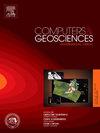OPTIM: A Python-based optimization framework for geophysical problems
IF 4.4
2区 地球科学
Q1 COMPUTER SCIENCE, INTERDISCIPLINARY APPLICATIONS
引用次数: 0
Abstract
Geophysical inverse problems, such as full waveform inversion, involve significant computational demands and algorithmic complexity. Geophysicists aim to resolve numerous unknown parameters within a limited number of inversion iterations, necessitating both efficient and accurate geophysical modules (e.g., forward modeling and sensitivity kernel calculations) and robust optimization frameworks to drive the inversion process. To facilitate the rapid construction of comprehensive inversion workflows, we present OPTIM, a Python-based open-source local optimization software package. OPTIM structures each optimization step as an independent program, exchanging information between adjacent steps through files and parameters. Its implementation closely follows mathematical formulations, allowing users to easily identify and modify specific modules as needed. Constructing an inversion workflow with the proposed software is analogous to assembling modular components, minimizing concerns about program interfaces and lifecycle management. Through a series of examples, we demonstrate how the proposed software enables efficient inverse workflow construction and large-scale geophysical inversion on multi-node high-performance clusters. OPTIM empowers researchers to rapidly and robustly develop novel geophysical inversion processes without compromising on performance and scalability. This capability significantly streamlines the complexity in solving geophysical inverse problems and accelerates the development cycle.
OPTIM:一个基于python的地球物理问题优化框架
地球物理反演问题,如全波形反演,涉及大量的计算需求和算法复杂性。地球物理学家的目标是在有限次数的反演迭代中解决众多未知参数,这需要高效准确的地球物理模块(例如,正演建模和灵敏度核计算)和强大的优化框架来驱动反演过程。为了便于快速构建综合反演工作流,我们提出了基于python的开源局部优化软件包OPTIM。OPTIM将每个优化步骤构建为一个独立的程序,通过文件和参数在相邻步骤之间交换信息。它的实现严格遵循数学公式,允许用户根据需要轻松识别和修改特定模块。使用所建议的软件构建反转工作流类似于组装模块化组件,将对程序接口和生命周期管理的关注最小化。通过一系列实例,我们演示了该软件如何在多节点高性能集群上实现高效的逆工作流构建和大规模地球物理反演。OPTIM使研究人员能够快速、稳健地开发新的地球物理反演过程,而不会影响性能和可扩展性。这种能力大大简化了解决地球物理反演问题的复杂性,加快了开发周期。
本文章由计算机程序翻译,如有差异,请以英文原文为准。
求助全文
约1分钟内获得全文
求助全文
来源期刊

Computers & Geosciences
地学-地球科学综合
CiteScore
9.30
自引率
6.80%
发文量
164
审稿时长
3.4 months
期刊介绍:
Computers & Geosciences publishes high impact, original research at the interface between Computer Sciences and Geosciences. Publications should apply modern computer science paradigms, whether computational or informatics-based, to address problems in the geosciences.
 求助内容:
求助内容: 应助结果提醒方式:
应助结果提醒方式:


